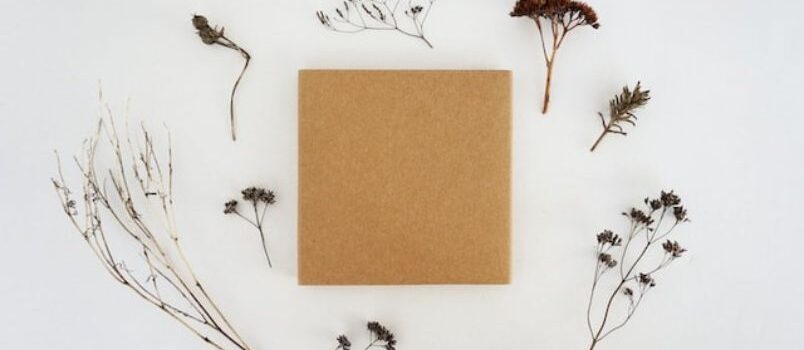By incorporating sustainable, eco-friendly materials in our designs, we – designers, creatives, and artists – can contribute to a greener future.
In this article, we’ve listed the eight inspiring materials, carefully arranged by the most eco-friendly (usually meaning most locally available) options and the innovative solutions with the most return to the planet.
Our aim is to ignite creativity and foster eco-consciousness in your projects.
1. Recycled Paper and Cardboard
Switching to materials made from post-consumer waste instead of using virgin pulp not only reduces the demand for virgin resources but also minimizes landfill waste and saves energy in the production process.
To package your products sustainably, consider using recycled paper bags, cardboard mailers, and custom boxes.
These recycled materials offer numerous options for reducing your creative footprint. Moreover, they are compatible with most printers and design platforms. By utilizing print-ready files, such as flyer templates psd files, you can easily adapt any design to fit your go-green packaging needs when creating online.
2. Biodegradable Plastics
Biodegradable plastics are derived from diverse renewable sources like corn starch, sugar cane, algae, or wood pulp. They break down naturally, some in as little as a few months, and leave no harmful residues behind.
For your eco-conscious packaging designs, seek out local suppliers offering options like plant-based shrink wraps, compostable pouches, and biodegradable food containers.
3. Organic Fabrics
Organic cotton, hemp, or bamboo fabrics are cultivated without harmful pesticides and chemical treatments, making them environmentally friendly choices.
Create unique packaging solutions with organic fabric gift bags, reusable tote bags, and cloth wraps.
4. Mycelium Packaging
Mycelium-based packaging materials offer a fascinating solution to reduce reliance on traditional materials. Made from the root structure of fungi, mycelium packaging is biodegradable, lightweight, and has insulating properties.
Keep an eye on ongoing research and developments in this area to explore the potential of mycelium mold packaging for fragile items.
5. Edible Packaging
Imagine packaging that serves as both protection for the product and a delightful treat for the consumers. Edible packaging is gaining traction, especially in the food industry. Companies are experimenting with materials made from seaweed, rice, and other edible substances to create wrappers and containers that can be safely consumed.
Look out for startups and organizations working on edible packaging solutions (find them on startup business statistics websites) to use in your designs.
6. Plantable Seed Paper
Plantable seed paper is made from biodegradable materials embedded with seeds that will germinate. Explore local crafters or companies producing seed paper products, and consider incorporating these ideas into your designs.
7. Ocean Plastic and Marine Waste
As designers, we can actively contribute to cleaning up our oceans and reducing plastic pollution by sourcing materials made from reclaimed ocean waste, diverting harmful plastics from our seas, and giving them a second life.
Keep an eye on organizations working on collecting and repurposing ocean waste, and consider using ocean plastic packaging for marine-themed products.
8. Biodegradable 3D Printing Materials
The world of 3D printing holds tremendous potential for sustainable design. By using biodegradable materials in 3D printing, we can create intricate and environmentally friendly product containers.
Stay informed about global initiatives and research on sustainable 3D printing materials by following thought leaders in the industry and experimenting with 3D-printed biodegradable packaging to showcase the future of eco-conscious design.
Give Back and Let Your Creativity Flow with These Green Packing Options
Embracing sustainable, eco-friendly materials in your projects empowers you to contribute to a greener future.
By incorporating conscientious materials, whether recycled paper for flyers or mycelium-based solutions for packaging, you can drive positive environmental impact with your designs.


